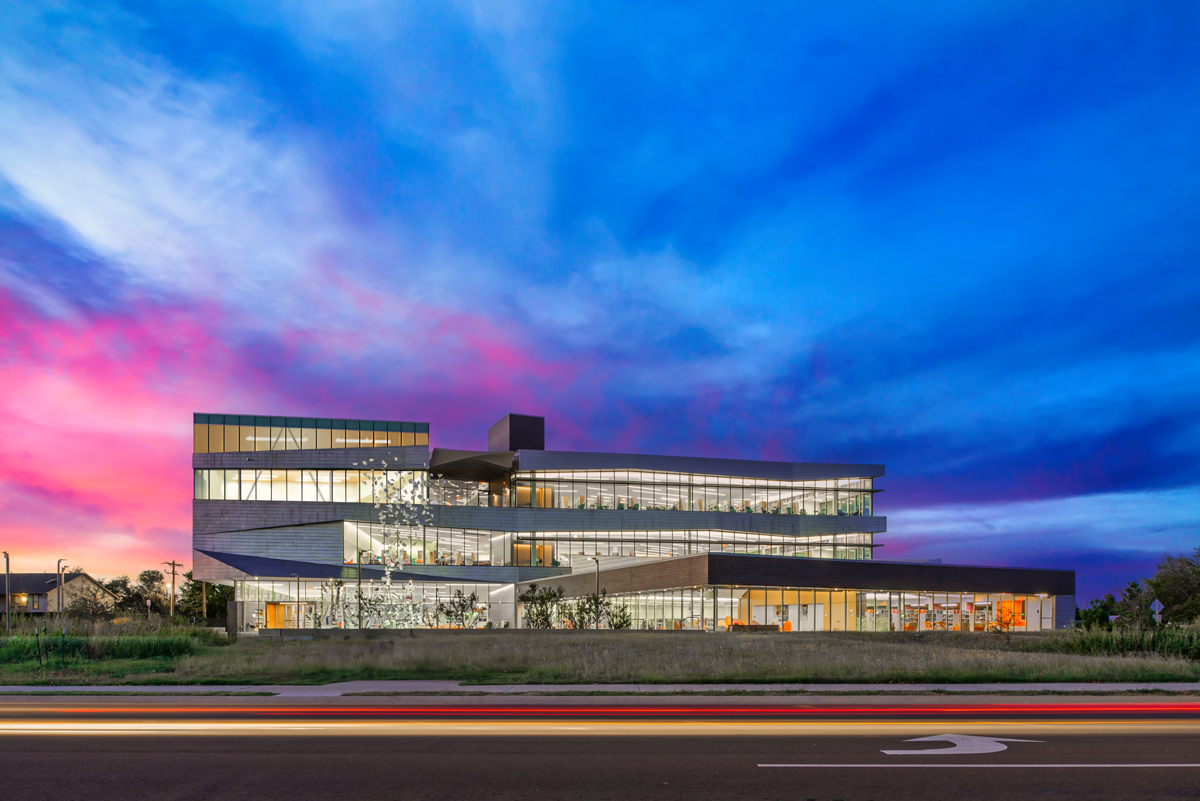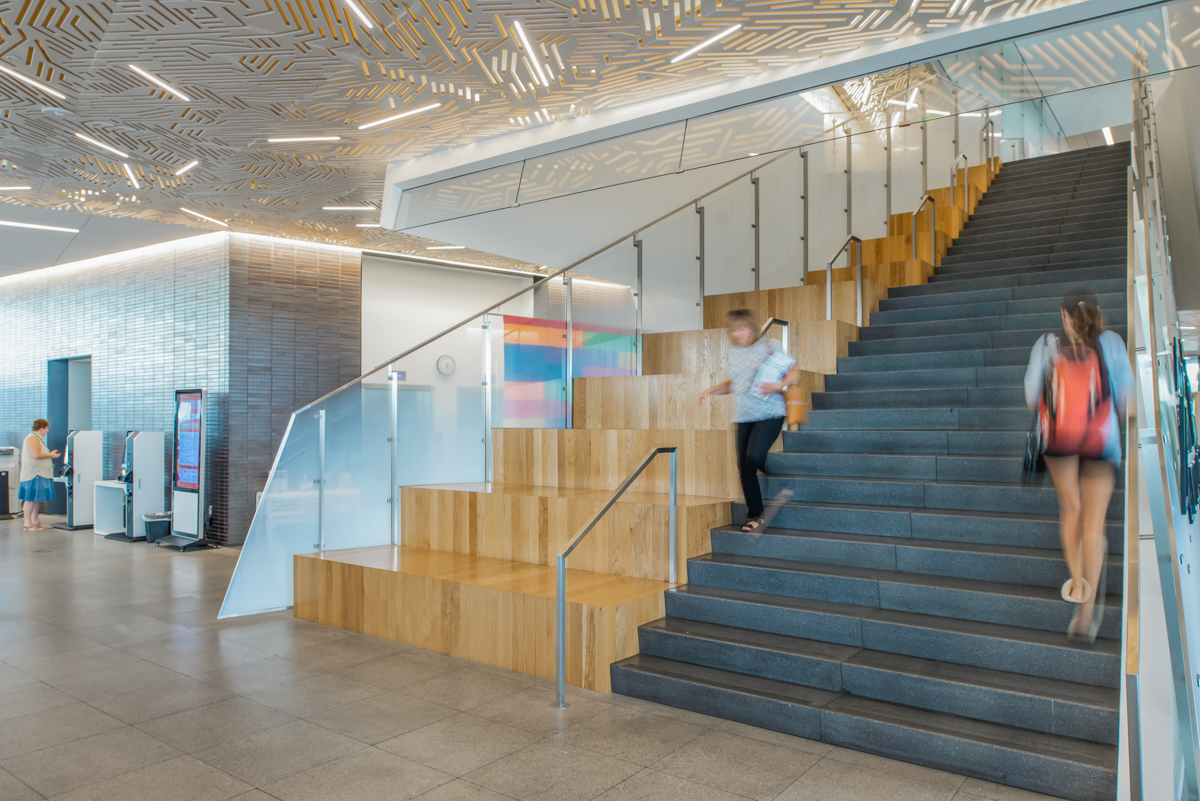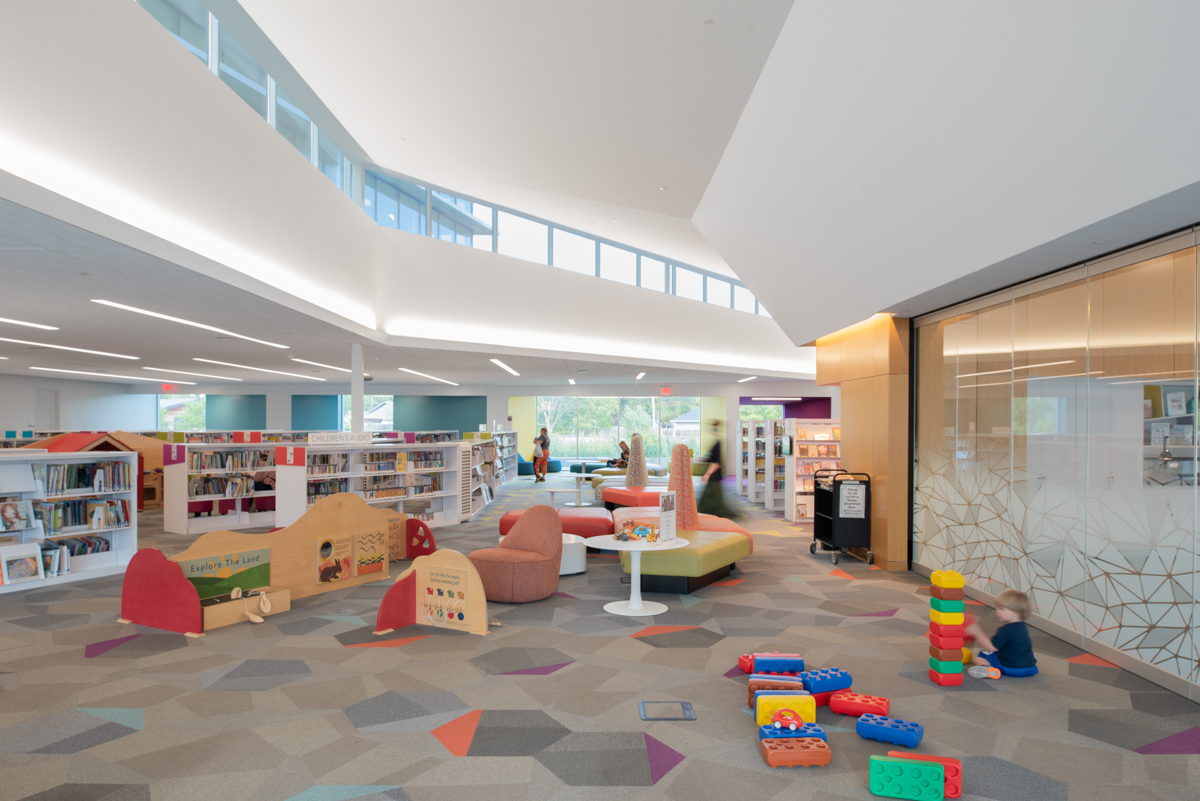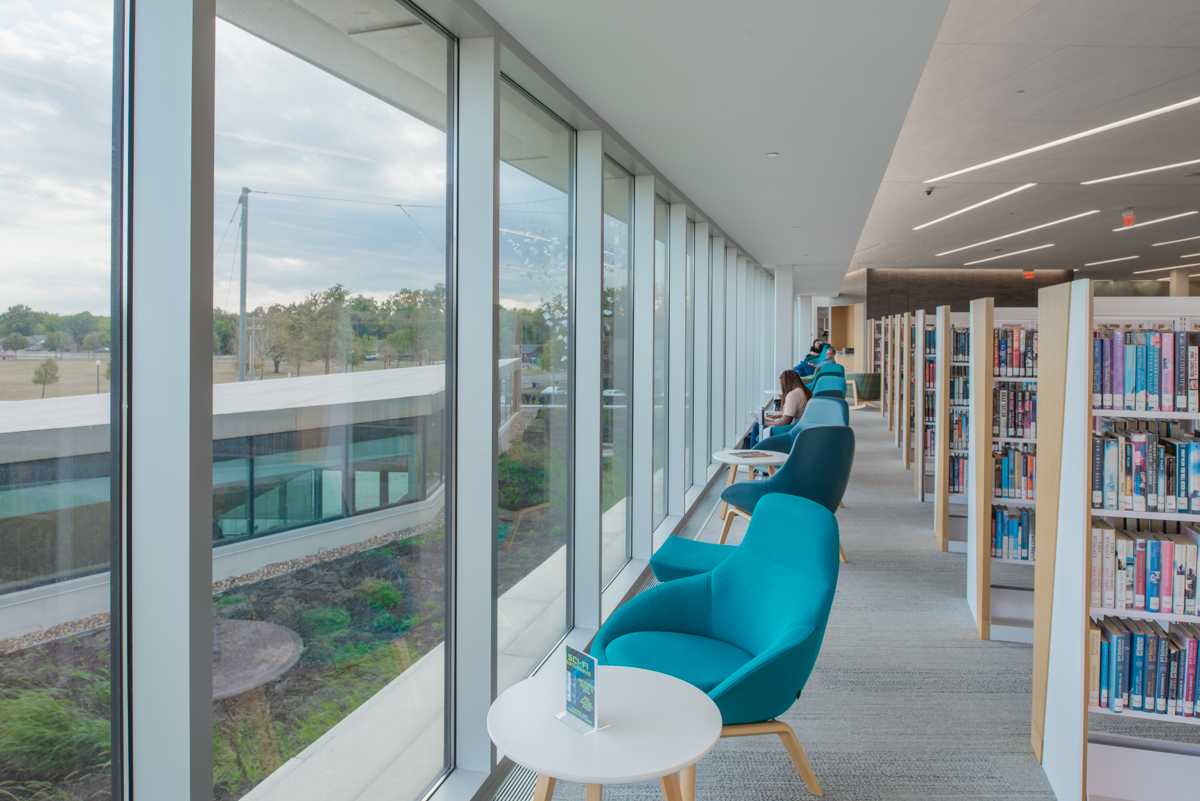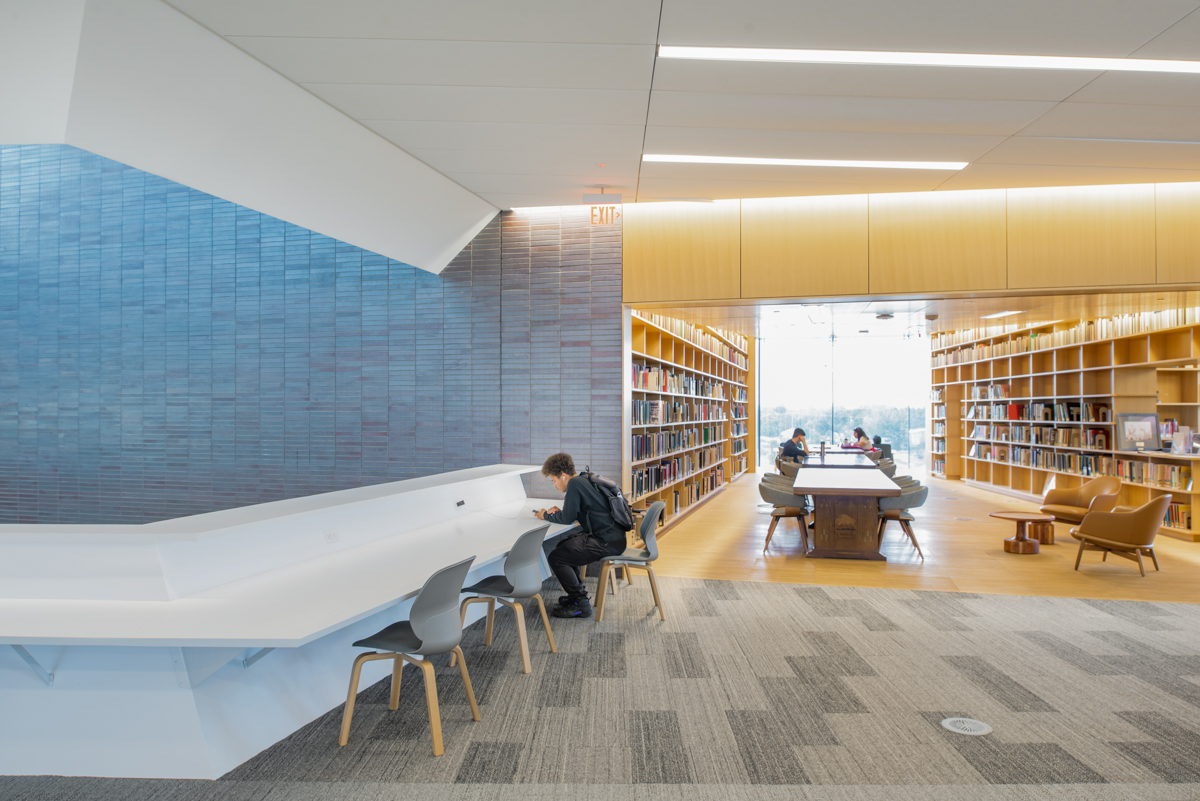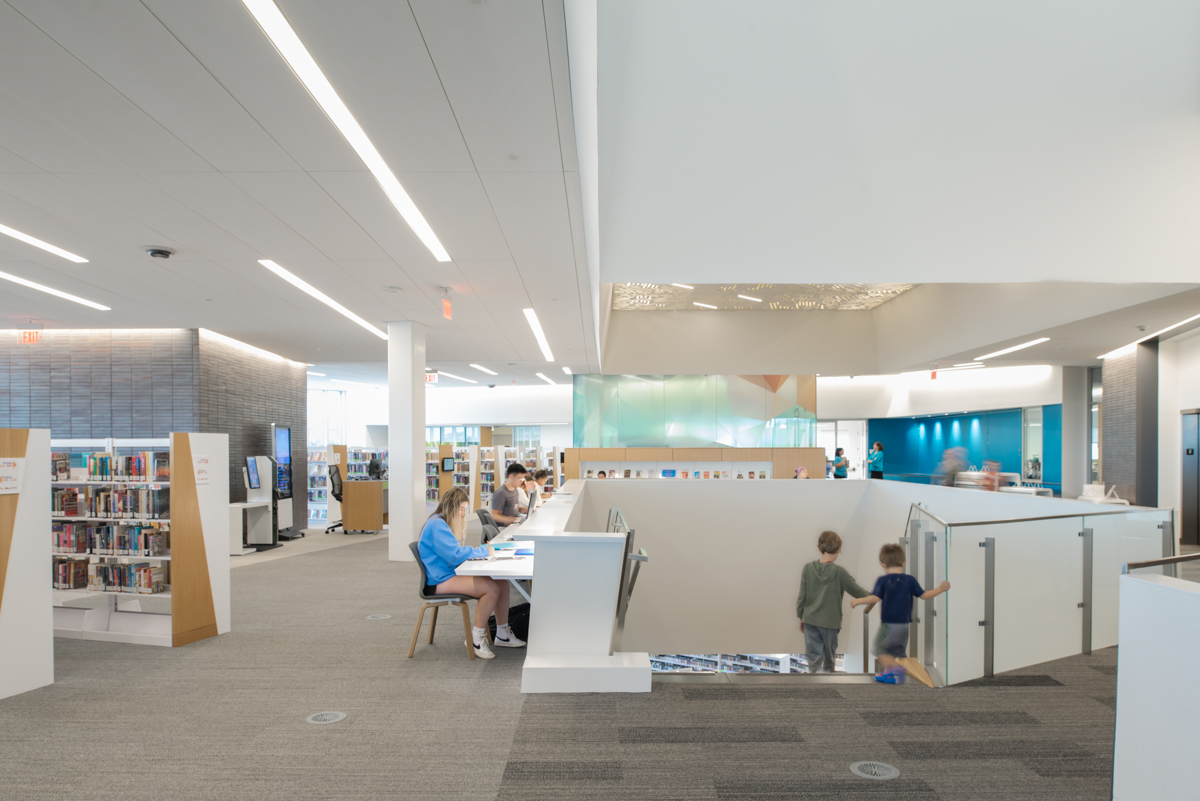
Norman Central Library
Norman, OKAfter 53 years, the Norman community voted to approve a bond and provide the City new library buildings. One library was to be a complete replacement of the existing Central Library. The new library has been called a gem by the community. It is located on a new site, adjacent to a popular community park. The beautiful facility was designed and built with the future squarely in mind, with numerous design features constructed to maximize flexibility and longevity.
The facility includes fire protection to NFPA 13 with standpipes in stairwells due to the height of the building. The plumbing fixtures are low-flow models and include automatic controls to maximize LEED points. Storm drains are sized larger than typical to meet local requirements and accommodate an occasional deluge.
The building heating and cooling is powered by a geothermal well field of 112, 500’ deep wells, as well as a geothermal vault, that are carefully coordinated with storm water retention tanks and numerous utilities in a snug site. Two geothermal chillers, one serving as a chiller and the other as a “boiler”, utilize compressors to create usable heating and cooling water during the entire year. The hydronic piping systems, both geothermal and building sides, are designed to operate in a variable primary configuration. This allows the hydronic pumps to operate as efficiently as possible and only pump as much water as required by the building at a given time, saving energy, and extending pump lifespan. The heated and chilled water is used to power (5) main variable air volume (VAV) air handling units (AHUs) that deliver space conditioning via an underfloor air distribution (UFAD) system to allow maximum flexibility for room layout changes in the future. The large AHUs feed designated underfloor air highways to serve central portions of the facility and blower coil units assist with conditioning spaces along the exterior by handling the relatively high envelope loads. Each individual zone is provided with adjustable floor diffusers to allow occupants to maximize their individual comfort on a daily basis, as well as maximize the potential for zones to be repurposed in the future. Several areas were more optimally served via alternative HVAC systems, such as the staff office area, which is served by an above-floor VAV system with reheat coils tied to the geothermal heating water. A small air-cooled mini-split system serves specialty zones with year-round cooling needs, such as large electrical rooms and technology closets, to avoid turning the geothermal chiller on during the winter months.
Ventilation air is provided to the building via (4) Energy Recovery Ventilators (ERV)s located in mechanical rooms and on the roof. The units use a heat exchanger to transfer energy from the building exhaust air to the incoming fresh air, which reduces the geothermal energy necessary to fully condition the air before it enters the space, saving energy. This fresh air is ducted to each AHU to provide code-required fresh air to each space. Multiple CO2 sensors are placed throughout the facility to fully incorporate demand control ventilation and provide the optimal amount of ventilation for occupant’s activity within the building at all times while saving energy by not providing ventilation when it is not beneficial to the occupants.
A new underground electrical service provides power to the building and when not available a diesel emergency generator, associated transfer switch or temporary generator connection cabinet provides power to select building needs. Flexibility on the electrical side of project again is found on the floors. The facility utilizes access floor boxes to supply power and connectivity to furniture throughout the building. These can be moved easily to adjacent spaces. Emergency transfer devices have been utilized throughout the building to meet the requirements of egress lighting. Upon loss of power, the emergency transfer device will activate and override the switching controls in each space which will cause the luminaire to become automatically illuminated.
A new passive optical network (PON) solution was installed, complete with an optical line terminal and field installed optical network terminals, to provide a long-lasting system. Passive fiber optic splitter enclosures were installed in select locations. Wireless access points were provided for full building wireless coverage and a CATV system was designed complete with a broadband distribution amplifier, taps and additional components to create a trunk and branch topology. Select spaces included robust audio-visual systems based on programming conversations. These A/V solutions A new 480/277v, 3-phase, 4-wire, underground electrical service was provided to the new addition of the building. A new generator was installed in the parking area, adjacent to the existing genset which could not take on the additional electrical load. To satisfy the requirements of the life safety code, transfer devices were provided in the new addition to move light fixtures to generator power and full output upon loss of utility power. Additionally, the new generator provides back-up power to kitchen refrigeration equipment and IT equipment.
Tamper-resistant receptacles for general and specific were installed in all areas of the building and served from the nearest branch panelboard. Floor boxes were installed and utilized to supply power for specific furniture needs.
The existing fire alarm control panel did not have the capacity to handle the new addition, so a new fire alarm control panel was provided. The new panel has voice notification capabilities to meet code requirements. Fire detection and alarm systems were installed completely throughout the new building. Devices were coordinated to provide a clean look.
Project
Norman Central Library
Location
Norman, OK
Architect
MSR Design
Construction Cost
$39,100,000
Size
85,000 SF
Completion Date
2020



